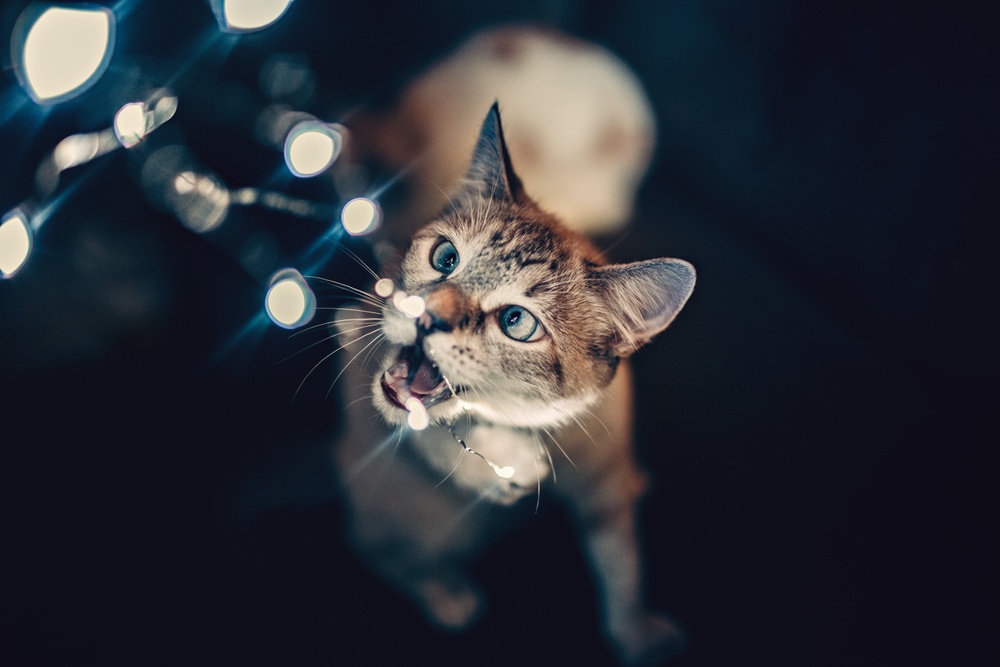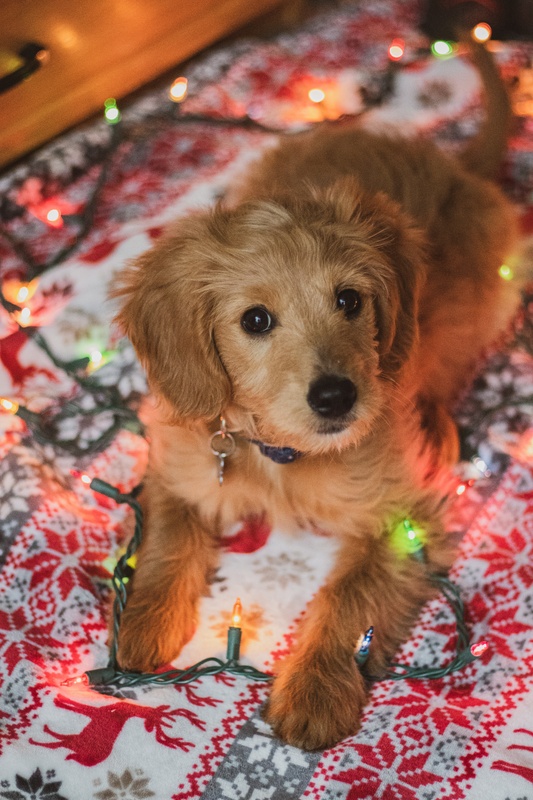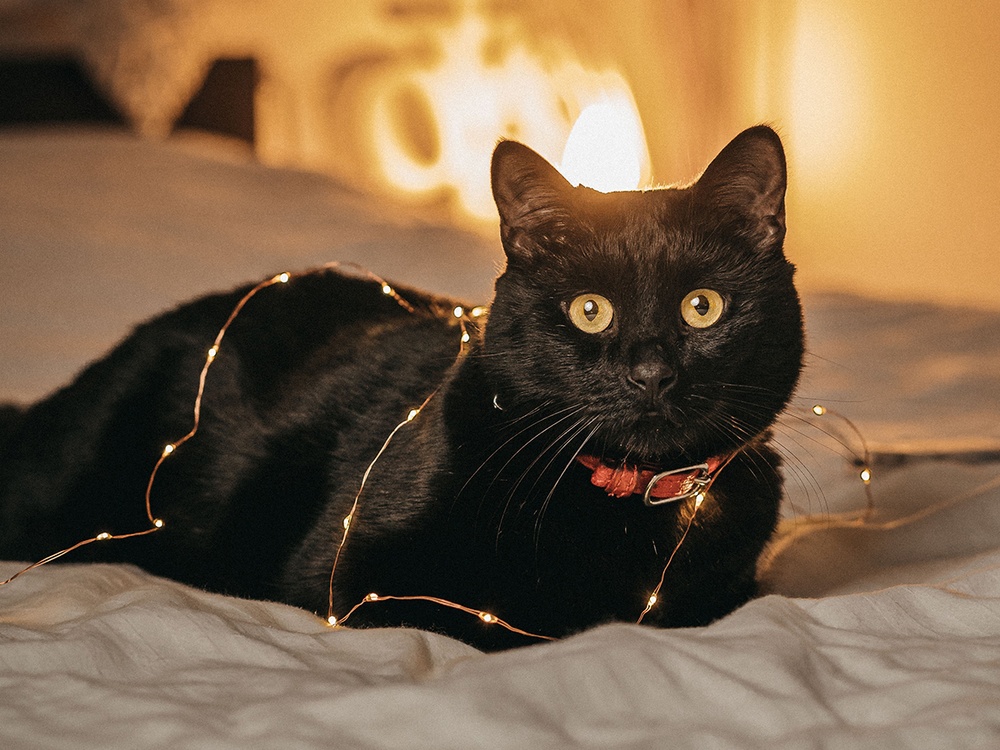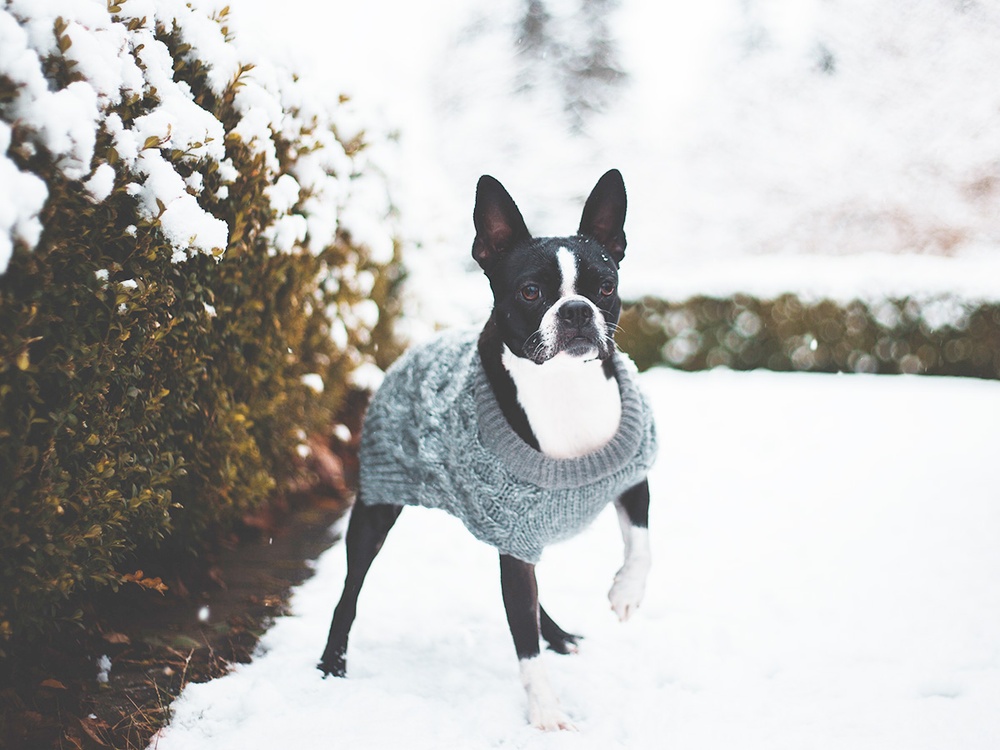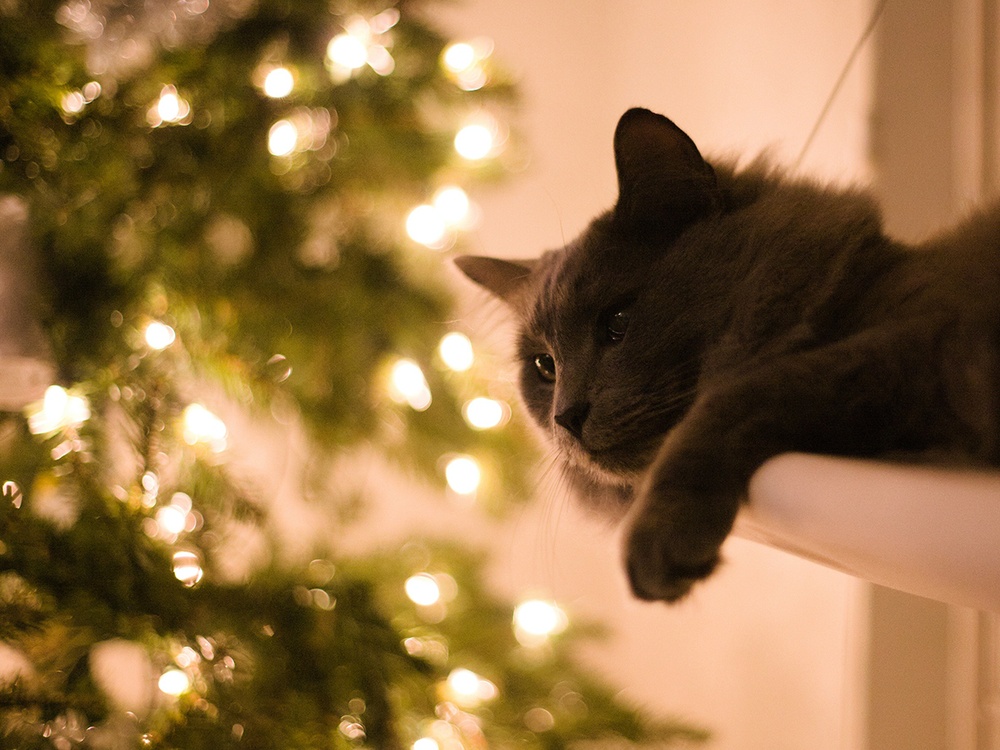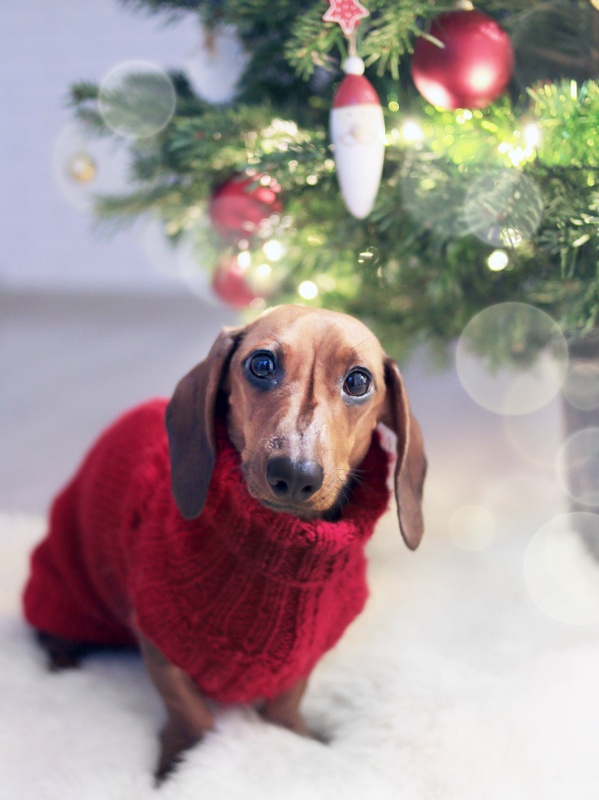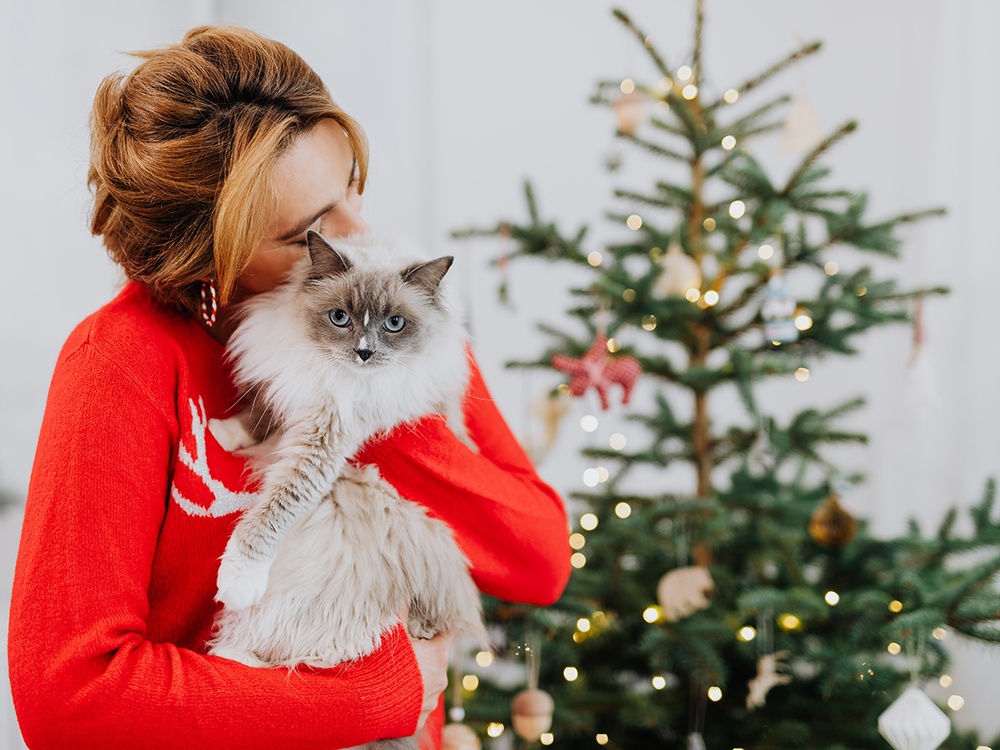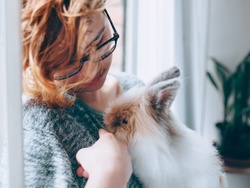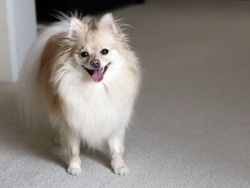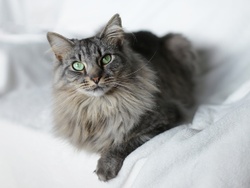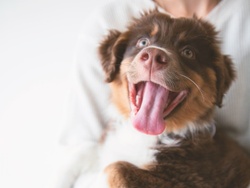How To Avoid Common Holiday Pet Hazards
The winter holidays are a festive and fun time for humans but can be dangerous for our pets. Curious cats and dogs can get themselves into trouble with many holiday favorites becoming Christmas hazards for pets.
From dangerous Christmas decor to common holiday food hazards being snuck under the table, it can be challenging to keep your pet safe during the holidays.
How To Keep Your Pets Safe During The Holiday Season
Proactively protecting your pets from some of the most common holiday pet hazards can spare you both stress and even prevent a trip to the emergency veterinary hospital. You can keep your pets safe throughout the holiday season with these holiday safety tips for pets.
Common Holiday Food Hazards For Pets
Holidays come with heaping plates of foods and treats that may be human favorites, but many holiday foods are dangerous for pets. The best way to prevent holiday foods from accidentally poisoning pets is to keep them completely out of reach.
Many pets are naturally curious. Bigger dogs have the added height benefit to graze tables and countertops for a tasty treat or unattended plate. Take extra care to keep human foods inaccessible to pets. Secure garbage cans and lids to prevent your pet from turning the trash bin into their own dangerous snack stocking.
Inform well-meaning guests of a strict ‘no human food for pets’ policy. Keep an eye out for any tender-hearted guests who may fall victim to puppy dog eyes and offer just one little bite under the table.
Common holiday foods that are dangerous to pets include:
- Sugar-Free candies and treats: Sugar-free versions of many foods contain xylitol which can be fatal to dogs and cats.
- Peppermint is also a common holiday ingredient that is toxic for both cats and dogs.
- Fat Trimmings or turkey skin: Both can cause pancreatitis in pets.
- Turkey, ham, or other bones: Bones quickly become a choking hazard as they change shape while being consumed, and can even splinter when chewed, causing serious internal damage.
- Cocktails: alcohol is poisonous to all pets and could be fatal.
- Coffee: brewed, grounds, whole beans, and particularly chocolate-covered espresso beans are all dangerous for pets.
- Chocolate: All types contain a chemical called theobromine, which can be severely toxic for dogs, cats, ferrets, and other small animals.
- Yeast-based raw dough is tempting for cats and dogs but can cause painful gas and dangerous bloating.
Remember these common foods that are dangerous to pets that may make an appearance at your holiday events:
- Grapes and raisins
- Raw or undercooked meat, fish, and eggs
- All types of nuts - especially Macadamia nuts
- Garlic (including dried and powdered versions)
- Onions, chives, and leeks (including dried and powdered)
- Citrus and fruits with pits (apricots, avocados, peaches, cherries)
- Apple seeds (in large quantities)
- Mushrooms
- Mustard seeds
- Rhubarb leaves
If you think that your pet may have consumed a toxin. Don’t wait. Quick action can save your pet’s life.
Call your primary care veterinarian if they're open. Some primary care veterinarians have limited holiday hours. If they are unavailable, call your local veterinary emergency clinic. Most are open 24/7. You can always call ASPCA Poison Control (888-426-4435), available 24/7/365. Or the Pet Poison Helpline (855-764-7661), available 24/7/365 if you suspect your pet has ingested a toxin.
Common Holiday Decor Hazards For Pets
The festive decor that makes the holiday season come alive can quickly become a dangerous pet hazard.
Artificial Christmas Trees: Your favorite Christmas staple is often one of the biggest threats to curious cats. Your cat may be moved by the desire to climb or scratch your Christmas tree. Causing it to fall over, potentially resulting in an injury from abrasions and bruises to puncture wounds and broken bones.
There is no such thing as a cat-proof Christmas tree, but you can securely anchor the tree to prevent it from becoming a Christmas hazard for your pets. Choose a heavy and stable base or tether your Christmas tree to the nearest wall or even the ceiling to help prevent it from falling over.
Candles: A dancing flame adds a special ambiance to festive occasions but takes extra care to never leave lit candles unattended. Your pets are curious creatures. A quick sniff can lead to singed fur, burns, or even a fire if they are spooked and knock over a candle.
Even when extinguished, candle wax stays hot and can cause severe burns on delicate noses and paw pads.
Tinsel and Ribbon: While not toxic, tinsel and ribbon are extremely dangerous to pets. Cats especially love string. A sparkling ribbon or glittering tinsel is an irresistible new toy. Unfortunately, if ingested, tinsel and ribbon can become stuck in the throat or tangled up in the intestines, which could require surgery or even cost your cat their life.
Ornaments & Hooks: A shiny ornament hanging on the tree is simply a new ball in the mind of your cat or dog. Hang ornaments high out of reach, and secure them well so that even if the tree is shaking with the weight of a twelve-pound cat in its branches, the ornaments won’t fall and shatter. Shattered ornaments are lethal if pieces are swallowed. The shards cause many tiny cuts throughout the digestive system.
Even shatterproof ornaments can be dangerous if chewed on. Metal ornament hooks are enticing for cats and dogs to play with but can cause choking or internal bleeding if ingested. Opt instead for stringed ornaments.
Preventing access to all ornaments is the best plan to keep your pets safe.
Holiday Lights And Candles: The holidays would not be the same without twinkling string lights. As much as we love to look at them, some pets may love to chew on the electric cords. This can lead to serious injuries such as electrical shock, burns, and even sparks that could start a house fire.
Be intentional about where you place cords to keep them out of reach, regularly check for signs of chewing, use cord covers, and choose three-prong extension cords.
Firestarter logs: Dogs that love to chew may be tempted to try a bite of an interesting-smelling firestarter log left on the hearth. Unfortunately, the logs are made of sawdust and paraffin, neither of which your dog is made to digest. Your dog may experience an upset stomach or even an intestinal blockage if they decide a firestarter log is a chew toy.
Potpourris: Both liquid and dried potpourris are risky to pets because many contain essential oils that can be toxic to cats and dogs. Dried potpourris also have the additional risk of choking on the just-right size pieces.
Advent Calendars and Stockings: Both usually involve small items and edible snacks. Both may entice your pet to play with and eat something that could cause a choking hazard or toxic reaction. Make sure you keep potentially dangerous holiday treats out of the reach of your pets.
Common Holiday Plant Hazards For Pets
Before you deck the halls with festive live greenery, double-check that your plants of choice are safe for your furry family members. Many of the most popular holiday plants are toxic and even lethal for pets. Common holiday plants that are toxic to cats and dogs include:
- Poinsettias: This common holiday plant can cause symptoms ranging from a sore mouth or upset stomach to drooling, vomiting, and diarrhea.
- Holly: Main symptoms include drooling, vomiting, diarrhea, loss of appetite, and lethargy.
- Mistletoe: Can cause vomiting, diarrhea, difficulty breathing, slowed heart rate, and low blood pressure.
- Lily Plants - all parts of lily plants are extremely toxic to cats and can cause kidney failure.
- Live Christmas Trees: Pine Needles can cause mouth irritation, vomiting, diarrhea, lethargy, trembling, and weakness in the legs. Live Christmas tree tater could contain preservatives and plant nutrient chemicals toxic to all pets.
Keep your pet safe during the holidays by keeping these plants out of your home or choosing pet-friendly artificial versions.
Again, don’t wait if you think your pet may have ingested a toxin. Acting quickly can make all the difference for your pet. Call your local emergency vet hospital, the ASPCA Poison Control Hotline (888-426-4435), available 24/7/365. Or the Pet Poison Helpline (855-764-7661), available 24/7/365.
Cold Weather Winter Pet Hazards
Ice Melt: the holiday season comes with icy weather for many people. If you use ice melt on sidewalks and driveways, be sure to choose explicitly pet-safe versions. Standard ice melt products can chemically burn paw pads, and make your pet sick if they get curious and lick it up.
Prevent poisoning: Antifreeze is sweet-tasting and a potent toxin. A few licks of undiluted antifreeze can result in fatality. Clean spills quickly, and keep pets away when using antifreeze.
Monitor Temperatures: Keep pets inside, especially during particularly cold snaps. It’s a common misconception that cats and dogs are fine to spend extended time out in the cold because of their fur. Just like humans, they are susceptible to frostbite and hypothermia.
Ways to Make the Holidays Safer for Pets
Many people become overwhelmed by all the activities and parties of the holiday season at some point. Your pets are no different. Give your pets a dedicated quiet space to decompress when they’ve had enough socializing. A spare room with a cozy blanket, bowl of water, and ‘no people allowed’ policy is the perfect place for your pet to relax during a lively holiday party.
Most pets thrive on their daily routines. It’s important to try to keep your pet’s activities (like their daily walk) and eating schedules as consistent as possible throughout the holidays. This will help them feel less general anxiety and be more receptive to all the other changes in their day-to-day life.
Plan Ahead To Make the Holidays Safer for Pets
The holidays are a busy time with endless events, festive activities, parties, and coming and going. Making for many opportunities for your pet to bolt out the door. Before you get lost in the hustle and bustle of the upcoming holiday season, check that your pet’s collar is in good shape. Check that their ID tags are current. And confirm that their microchip information is updated.
Know the address and route to your 24/7 emergency veterinary clinic. Add important phone numbers and addresses to your phone now so they are easily available in case of a possible pet emergency. You can also keep this information posted in an easy-to-spot place in your home as well.
Your primary veterinarian's clinic phone number and address
Your closest 24/7 emergency veterinary clinic phone number and address
ASPCA Poison Control Hotline (888-426-4435)
Pet Poison Helpline (855-764-7661)
Your Online Pet Vet information
Your Pet Health Insurance information
How To Prepare For An Emergency Vet Visit
Holiday Safety Tips For Pets
Being aware of common holiday pet hazards and taking steps now to keep your pets safe during the holiday season is the best way to make the holidays safer for pets. Following these holiday safety tips for pets will help you and your furry family members have a happy holiday season.
Fact checked by Veterinarian

Dr. Paula Simons is an Emergency and Critical Care veterinary resident on her way to becoming a veterinary criticalist. She is originally from Philadelphia, Pennsylvania, and completed her veterinary training in Ontario, Canada, at Ontario Veterinary College. Dr. Paula Simons has a particular interest in critical care nutrition, trauma, and pain management. She enjoys the management of surgical patients and troubleshooting complex cases. Additionally, she is a huge advocate for her patients and ensuring their comfort. She has two cats named Moo and Kal, whom she loves dearly. More About Us
